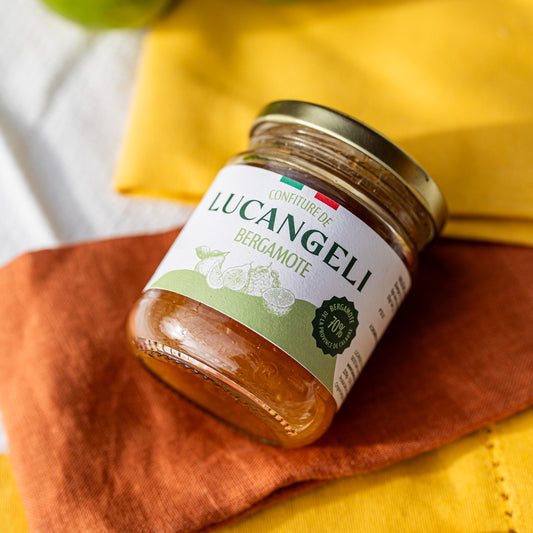Honey crystallization is a natural phenomenon that can be surprising, especially if you're unfamiliar with the composition and functioning of this delicious beekeeping product. While it may seem like something is wrong when your honey becomes grainy or solid, it's actually a sign of its quality and purity . This is because honey is a living substance that evolves over time and with its environment.
Why does honey crystallize?
Honey crystallization is a natural phenomenon mainly related to its composition of glucose and fructose . These sugars, whose proportion varies depending on the flowers foraged by the bees in the apiary , play a key role in the texture of the honey. Glucose, less soluble than fructose, tends to crystallize, forming granular crystals . This process can be intensified by storage temperature , the presence of organic particles such as pollen , and the water content of the honey. It is essential to emphasize that this crystallization does not alter the nutritional and aromatic properties of the honey. On the contrary, it can intensify its floral flavor and density , thus enriching the tasting experience. Crystallization can change the appearance of the honey, but it does not affect its quality . Honey that does not crystallize could have undergone excessive heating or dilution, thus compromising its original quality.
Honey decrystallization process
Crystallization is a natural process that can affect honey due to its glucose and fructose composition. If you find that your honey has formed granules or crystals, don't worry, this does not mean that it has lost its quality or flavor . It is simply a reaction to cold or fluctuating temperatures that can change the viscosity of the honey. The process of liquefaction , or decrystallization, is simple and can be done at home.
Step 1: Understand the type of honey you have
To begin, it's important to understand the type of honey you have. Honey, depending on its composition and floral source, can crystallize differently. For example, sunflower honey is known to crystallize more quickly, while acacia honey remains liquid longer due to its lower glucose content. Identify the type of honey you have by looking at the label on the jar or by contacting the producer . Remember that crystallization does not decrease the purity or sweetness of the honey, it only affects its texture.
Step 2: Choose the right decrystallization method
To maintain the freshness and flavor of your honey, it is crucial to choose an appropriate decrystallization method, once you have identified the type of honey. Most honeys can be decrystallized through gentle heating . This can be achieved by placing the honey in a double boiler , ensuring a moderate temperature is maintained to preserve its aromatic and nutritional qualities. Regular stirring will help dissolve the sugar crystals . Alternatively, a low-temperature cooker can be used, stirring the honey regularly to prevent carbonization. If your honey is stored in a large jar, divide it into smaller portions to make reheating easier. After liquefaction, be sure to store your honey in a cool, dry place to prevent further crystallization.
The different methods of decrystallizing honey
Honey crystallization is a natural phenomenon that can alter its viscosity and sweetness . This crystallization is due to the presence of sucrose , glucose , and fructose in honey. However, this process does not diminish the quality , flavor , or aromatic properties of honey. There are several methods to return honey to its liquid state while preserving its refinement and floral character.
Double boiler method
The double boiler is one of the most effective methods for liquefying crystallized honey. It is a gentle and gradual heating process that ensures the dissolution of the honey crystals. To do this, simply place the jar of honey in a pan of hot water, without exceeding a temperature of 40-45°C. It is important to stir the honey with a spoon to facilitate the dissolution of the granules. This method preserves the quality , color and flavor of the honey while ensuring its liquefaction .
Using the microwave
Crystallized honey can be returned to its liquid state through a liquefaction process. One effective method is to use a microwave, which is faster than the traditional double boiler . However, this method requires constant attention to avoid overheating, which would affect the quality and beneficial properties of the honey. Place the open jar of honey in the microwave, set the temperature to low, and heat in 15-30 second intervals, stirring to ensure the crystals dissolve evenly. This method is particularly suitable for small containers of honey, as heating large quantities evenly can be difficult.
Precautions to take when decrystallizing honey
Honey crystallization is a natural phenomenon that occurs when glucose and fructose, two of the main components of honey, solidify. Sunflower honey, for example, tends to crystallize more quickly due to its higher glucose content. This process can be reversed by gently warming the honey, but it is important to take certain precautions to preserve the quality and beneficial properties of the honey.
Avoid overheating honey
The first precaution to take when liquefying crystallized honey is to avoid overheating it. Too high a temperature can damage its aromatic and floral characteristics, alter its color, destroy pollen, and even lead to the formation of undesirable substances. A commonly used method for warming honey is a double boiler: place the jar of honey in a pan of hot water and allow it to warm slowly. It is recommended to stir the honey occasionally with a spoon to promote even heating. Ensure the temperature does not exceed 40-45°C to maintain the purity and sweetness of the honey.
Preserve the beneficial properties of honey
To preserve the quality and flavor of your honey, it is crucial to avoid overheating during decrystallization . Rich in fructose and glucose , honey also contains enzymes , minerals , and flavor compounds that can be damaged by excessive heat. It is therefore best to liquefy honey gently and slowly, ideally in a double boiler, to maintain its purity and health benefits . Once transformed into a viscous liquid, honey should be stored in a cool, dark place to prevent further crystallization. These key measures ensure the preservation of the honey's fineness and texture while maintaining its natural benefits.
Crystallization of honey is a natural phenomenon that should not be considered an indicator of its deterioration. Indeed, this change in state is linked to the composition of the honey, more precisely to the proportion of glucose and fructose it contains. Honey from sunflowers , for example, crystallizes more quickly due to its high glucose content. Furthermore, crystallization can also be influenced by the storage temperature . For example, honey stored in a jar in a cupboard at room temperature will tend to crystallize more quickly than honey stored in the refrigerator .
Warm the honey to reverse crystallization
When honey becomes granular due to a natural crystallization process, it is possible to restore its fluidity. To do this, warm the honey to a gentle temperature , ideally using a double boiler . During this heating, gentle stirring with a spoon helps the mixture to be homogeneous and the crystals to dissolve. It is crucial not to exceed a moderate temperature to avoid boiling and the loss of honey's valuable properties , such as vitamins and enzymes , which give it its unique flavor and health benefits.
Choose a quality honey to benefit from its advantages
Despite crystallization, honey retains all its properties and sweetening power . To fully benefit from its benefits, it is recommended to choose a quality honey, from beekeeping , and whose purity is guaranteed by the label affixed to the jar . A quality honey is characterized by its color , its viscosity , its floral aroma and by the presence of pollen and beeswax .












 lucangeli.it
lucangeli.it


